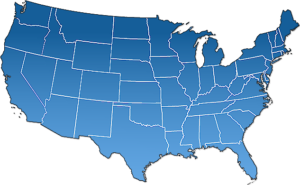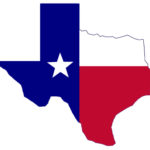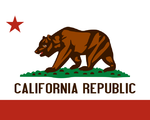 At least 62 bills relating to public notice in newspapers have been introduced in 25 different states through the first week of February, according to a review of bill-tracking software used by the Public Notice Resource Center. In addition, no fewer than 16 other bills targeting public notice in three states carried over from 2016 and are still active.
At least 62 bills relating to public notice in newspapers have been introduced in 25 different states through the first week of February, according to a review of bill-tracking software used by the Public Notice Resource Center. In addition, no fewer than 16 other bills targeting public notice in three states carried over from 2016 and are still active.
Many of the new bills merely add or change requirements for particular categories of notice, but at least 12 states are considering legislation that would move all or most of their official notices from newspapers to websites operated or controlled by government units. The potential that any of these bills will become law varies by state, according to newspaper lobbyists, but nobody is taking any of them lightly.
Researchers Rush to Preserve Data on Government Websites
For over 200 years, public notices have been published in newspapers in part as a consequence of the inviolability of newsprint. Legislators have always understood that when they passed laws requiring notice of official actions to be published in newspapers, a record of the notice would be easy to authenticate and would remain in newspaper archives in perpetuity.
A recent conference of independent researchers provides an excellent reminder that government websites fail miserably at meeting that traditional public-notice standard.
Q & A: Beth Bennett, Wisconsin Newspaper Association
 In 2016, the Wisconsin legislature created a study committee to “update and recodify” the statute relating to public notice “to reflect technological advances and remove obsolete provisions.” The committee was charged with considering changes to the statute that would “allow for information to be made available only electronically or through nontraditional media outlets.”
In 2016, the Wisconsin legislature created a study committee to “update and recodify” the statute relating to public notice “to reflect technological advances and remove obsolete provisions.” The committee was charged with considering changes to the statute that would “allow for information to be made available only electronically or through nontraditional media outlets.”
The Wisconsin Newspaper Association (WNA) mounted an impressive effort to convince the committee that newspapers and their websites were still the right place for public notice. The committee met three times and ended its review on Oct. 10, deciding to recommend only one change to a minor category of notices. We spoke with WNA Executive Director Beth Bennett about the process.
AP Reports on “Fight Against Publishing Notices in Newspapers”
 On the final day of 2016, the Associated Press provided subscribing news organizations with a brief story about the “fight against publishing notices in newspapers”. The piece covered Gov. Chris Christie’s stalled attempt to eliminate newspaper notice in New Jersey, and also mentioned new public notice laws passed last year in Arizona and Massachusetts.
On the final day of 2016, the Associated Press provided subscribing news organizations with a brief story about the “fight against publishing notices in newspapers”. The piece covered Gov. Chris Christie’s stalled attempt to eliminate newspaper notice in New Jersey, and also mentioned new public notice laws passed last year in Arizona and Massachusetts.
“I think with the state legislatures it’s just simply a matter of saving a few bucks,” Kip Cassino, a media analyst at Borrell Associates, told AP reporter Josh Cornfield. “It’s going to keep coming up and I think before the next decade ends, I don’t think you’re going to see the legals in newspapers anymore.”
Kentucky Paper Treats Public Notice Like News
 Most public notices look like classified ads — an undifferentiated mass of agate type, designed primarily for goal-directed readers.
Most public notices look like classified ads — an undifferentiated mass of agate type, designed primarily for goal-directed readers.
The public notices in Kentucky’s Georgetown News-Graphic are different. They look like news stories (PDF), designed to capture readers’ attention and promote the kind of serendipity that distinguishes newsprint from electronic formats. News-Graphic Publisher Mike Scogin (photo on left) decided to make this change about a year ago, after reading an issue of a newsletter distributed by newspaper-design consultant Ed Henninger.
Christie’s Effort to Eliminate Newspaper Notice in NJ Stalls
 It isn’t unusual for politicians seeking revenge for negative press coverage to retaliate by sponsoring legislation that would eliminate public notice advertising in newspapers. It is unprecedented, however, for the press to openly acknowledge the lawmaker’s intentions and to dub the legislation a “newspaper revenge bill.”
It isn’t unusual for politicians seeking revenge for negative press coverage to retaliate by sponsoring legislation that would eliminate public notice advertising in newspapers. It is unprecedented, however, for the press to openly acknowledge the lawmaker’s intentions and to dub the legislation a “newspaper revenge bill.”
Such is the bruising nature of politics in New Jersey, where Gov. Chris Christie’s effort to move all public notices in the state to government websites was withdrawn from consideration on Monday afternoon. But the newspaper industry isn’t out of the woods yet. The bill remains active and Christie has vowed to make it his “top priority” in 2017. The speaker of the General Assembly has also announced his intention to return to the issue “very soon.”
Government Website Notice Inadequate, Admits Environmental Agency
 The director of the same Michigan environmental agency under fire for dismissing concerns about the contamination of Flint’s water supply admitted her department failed to provide sufficient notice of another recent water proposal in the state, according to MLive Media Group.
The director of the same Michigan environmental agency under fire for dismissing concerns about the contamination of Flint’s water supply admitted her department failed to provide sufficient notice of another recent water proposal in the state, according to MLive Media Group.
Michigan Department of Environmental Quality (MDEQ) director Heidi Grether (pictured on the left) told an air and waste management law conference last week that 42 days on MDEQ’s website “probably” wasn’t sufficient to properly notify the public about a request by Nestle Waters North America to increase the amount of groundwater it pumps in Osceola County. Grether was named director of MDEQ in August after her predecessor was forced to resign in the wake of the Flint crisis.
Texas Legislative Committee Recommends Maintaining Newspaper Notice
 Support for public notice in newspapers received another boost on Nov. 1, when a joint legislative committee issued a report (PDF) recommending that Texas continue to rely on newspapers to inform the public about official actions in the state. The Joint Interim Committee on Advertising Public Notices suggested the legislature “maintain the current print requirement” and called newspapers “a third party who both creates a lasting and reliable record of the notice and acts as a gatekeeper to ensure that governments post their notices correctly.”
Support for public notice in newspapers received another boost on Nov. 1, when a joint legislative committee issued a report (PDF) recommending that Texas continue to rely on newspapers to inform the public about official actions in the state. The Joint Interim Committee on Advertising Public Notices suggested the legislature “maintain the current print requirement” and called newspapers “a third party who both creates a lasting and reliable record of the notice and acts as a gatekeeper to ensure that governments post their notices correctly.”
Kentucky, Wisconsin Conclude Public Notice Reviews on Positive Note
 Committees formed to review public notice laws in two states adjourned last month after showing strong support for maintaining public notices in newspapers. Wisconsin’s Legislative Study Committee on Publication of Government Documents and Legal Notices ended its review on Oct. 10, deciding to recommend only one change to a minor category of notices. Three days later, the Kentucky General Assembly’s Program Review and Investigations Committee ended its 27-month study with no changes.
Committees formed to review public notice laws in two states adjourned last month after showing strong support for maintaining public notices in newspapers. Wisconsin’s Legislative Study Committee on Publication of Government Documents and Legal Notices ended its review on Oct. 10, deciding to recommend only one change to a minor category of notices. Three days later, the Kentucky General Assembly’s Program Review and Investigations Committee ended its 27-month study with no changes.
California Governor Signs Law Redefining Public Notice Jurisdictions
 California Governor Jerry Brown signed an omnibus bill on Sept. 27 that included comprehensive changes to the state’s public notice law. The changes brought clarity to jurisdictional issues relating to the publication of public notices in the state. The issues first became a concern almost 20 years ago, when the state reorganized its judicial system.
California Governor Jerry Brown signed an omnibus bill on Sept. 27 that included comprehensive changes to the state’s public notice law. The changes brought clarity to jurisdictional issues relating to the publication of public notices in the state. The issues first became a concern almost 20 years ago, when the state reorganized its judicial system.
According to the California Newspaper Publishers Association, which supported the legislation, the new law creates Public Notice Districts to define where local notices must be published. These new geographical designations will replace Judicial Districts, which were eliminated when the state’s trial courts were unified in each county in 1998. The law still requires notices to be published in newspapers of general circulation, and it automatically recognizes newspapers currently adjudicated to accept such notices.
EPA Eliminates Mandatory Newspaper Notice for Clean Air Act Permits
 The Environmental Protection Agency (EPA) recently announced it was eliminating the mandatory requirement to provide newspaper notice of permitting and implementation actions under the Clean Air Act (CAA). The rule, which will take effect 30 days after it is published in the Federal Register, requires notification on EPA’s new “National Public Notices Website” and allows other agencies that implement EPA-approved CAA programs to publish notices on their websites as well.
The Environmental Protection Agency (EPA) recently announced it was eliminating the mandatory requirement to provide newspaper notice of permitting and implementation actions under the Clean Air Act (CAA). The rule, which will take effect 30 days after it is published in the Federal Register, requires notification on EPA’s new “National Public Notices Website” and allows other agencies that implement EPA-approved CAA programs to publish notices on their websites as well.
The rule doesn’t prevent permitting authorities from supplementing notice on their own websites with newspaper notice. In addition, it doesn’t override state laws requiring state and local environmental agencies to use newspapers to notify the public about EPA-approved permitting actions under the CAA. In those states, new laws would have to be passed to eliminate the newspaper-notice requirement.
